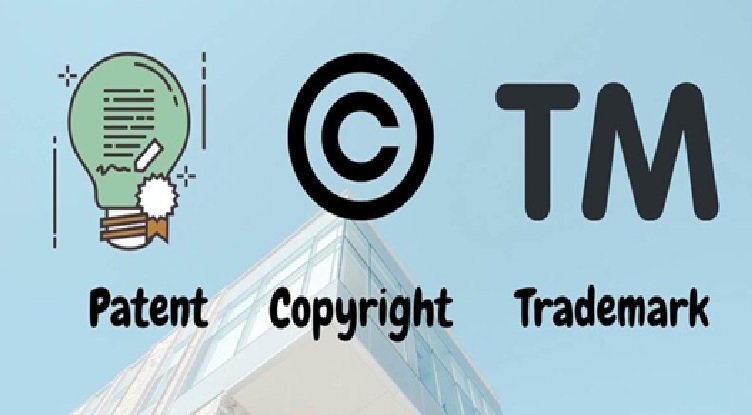Trademarks, copyrights, and patents aren’t just a form of IP protection but also critical driving forces in their respective industries. A study from Harvard Business Review reports that sectors that rely heavily on patents contribute over 38% to the U.S. GDP and generate 28% of all employment opportunities in the country.
Although patents, copyrights, and trademarks may overlap in some cases, such as when a product incorporates both patented technology and copyrighted material, they are distinct forms of intellectual property protection. Each type of protection has its own functions, and they protect different types of creations with different sets of rights and requirements.
Patents, trademarks, and copyrights all offer legal protections, but how does a copyright differ from a patent? Learn more about these intellectual properties, their purpose, and their applications in the modern world of innovation and creativity.
Purpose of Patents
Patents protect inventions or discoveries of new and useful processes, machines, compositions of matter, or improvements thereof. It’s also not just for tangible inventions like gadgets or machinery. Patents can also protect intangible innovations such as processes, methods, and software algorithms.
Patents serve as legal protections granted by the government to inventors, giving them the exclusive right to make, use, and sell their inventions for a limited period, typically 20 years from the filing date. This exclusivity allows inventors to recoup their investments in research and development, building a culture that encourages and supports innovation.
Violating intellectual property is very common in any industry. But The Myers Law Group provides a step on what to do if someone violates your intellectual property rights. And yes, you can take legal action. This is usually done by sending a letter telling the person who is using your idea to stop. You can file a case if you need to in order to protect your patent rights and ask for things like compensation or court orders.
Scope of Copyrights
Copyrights define the exclusive rights given to creators to control the use and distribution of their original works. These rights cover a wide range of creative expressions, including literary works, music, art, software code, and more.
As the creator, you have the sole authority to reproduce your work, create derivative works based on it, distribute copies to the public, and perform or display the work publicly. Copyright protection extends automatically the moment your work is created and fixed in a tangible form. This means that you don’t need to register your work with the Copyright Office to be protected, although registration offers additional benefits.
Copyright protection typically lasts for the life of the author plus 70 years. This lengthy protection period gives you control over your work for a long period of time, allowing you to benefit from its commercial exploitation and prevent others from using it without permission.
Function of Trademarks
As creators looking to protect their brands and distinguish their products or services in the market, you must know the function of trademarks. Trademarks serve as unique identifiers that help consumers recognize and associate products or services with a particular brand. By registering a trademark, you gain exclusive rights to use that mark in connection with your goods or services, preventing others from using a similar mark that could confuse consumers.
This exclusivity not only protects your brand but also builds trust and loyalty among your customers, as they can rely on the consistent quality and source of the products or services bearing your trademark. Trademarks can also appreciate in value over time as your brand’s reputation grows, becoming valuable assets that can be licensed or sold.
Duration and Renewal
Trademarks can last indefinitely as long as they’re being used in commerce and the necessary renewals are filed. Initially, trademarks are typically registered for a period of 10 years. Before the end of this initial term, you must file for renewal with the appropriate intellectual property office to keep your trademark active. Failure to renew your trademark could result in the loss of your exclusive rights to use it.
Renewal terms for trademarks vary by jurisdiction and some jurisdictions may require additional documentation or fees during the renewal process. So stay informed about the specific requirements in the regions where your trademark is registered.
Enforcement and Infringement
When someone uses your trademark without permission, it constitutes infringement. To protect your trademark from these, you must be vigilant in monitoring the market for unauthorized use. If you discover any infringement, you have the right to take legal action to stop it. This can include sending cease and desist letters, filing lawsuits, and seeking damages for lost profits.
Enforcing your trademark can protect your brand’s reputation and prevent consumer confusion. By taking swift action against infringers, you demonstrate that you’re serious about protecting your intellectual property. In cases of infringement, it’s advisable to consult with a legal professional who specializes in intellectual property law. They can provide guidance on the best course of action to take and help you handle the legal process better.
Conclusion
Patents protect inventions, copyrights protect creative works, and trademarks protect brand names and logos. Each serves a unique purpose and has its own scope, function, and duration.
Remember to enforce your rights and be aware of potential infringements to protect your intellectual property. Keep innovating and creating, and make sure to protect your ideas with the right form of protection.



